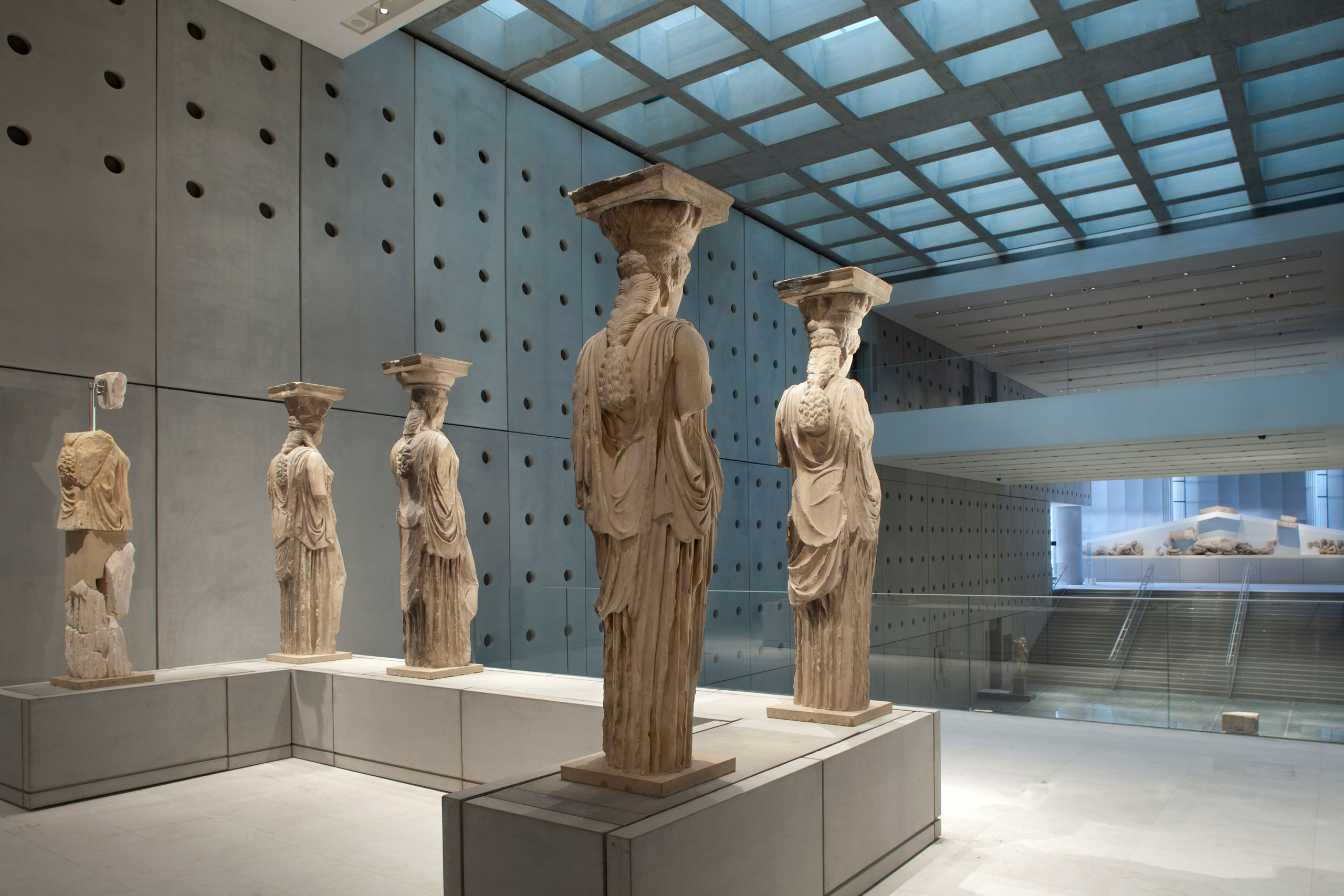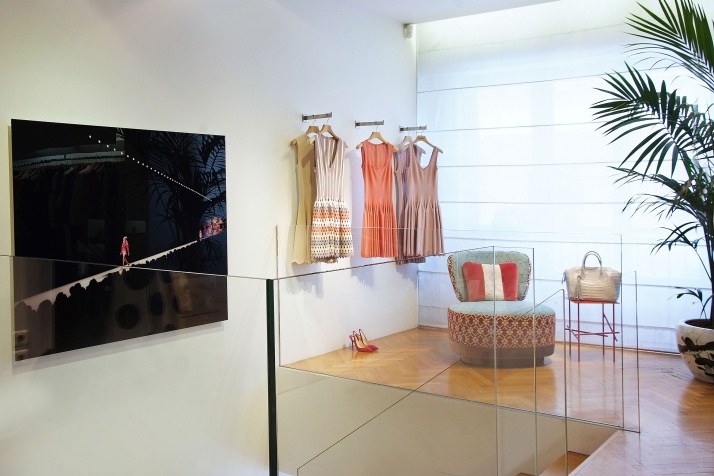Almost like a giant trapped among midgets, the New Acropolis Museum towers over the surrounding neighborhood in what is considered to be the boldest architectural intervention of the 21st Century in the city of Athens. Riddled with controversy, just like every major work of art, the building itself was masterminded by Swiss deconstructivist Bernard Tschumi and local museum specialists Michael Photiadis & Associate Architects in a monumental (pun intended!) collaboration. Eventually inaugurated in 2009, the construction had initially threatened to obliterate neighboring residencies that hindered the unobstructed view of the Parthenon, but even the harshest critic had to agree the sensation of wandering around its 14,000 square footage was almost a spiritual experience.

Head of a young barbaric leader. Found inside the Theatre of Dionysus. ca. 2nd c. AD. Photo by Nikos Daniilidis © The Acropolis Museum.

View of the Archaic Gallery.
Photo by Nikos Daniilidis © Acropolis Museum.
Designed to expand human intellect, the New Acropolis Museum breaks with tradition through adopting an extremely user-friendly attitude that insists on putting visitors first. Once inside, the ground floor gallery simulates the uphill walk of the Acropolis slope, where the world beneath your feet is made up of the ancient remains excavated during the construction of the building, covered by glass panels. This floor is meant to simulate everyday life on the slopes of the Sacred Rock (houses, workshops, tools and utensils), while the second floor is more of an interpersonal experience. Here, archaic and early classical statues are scattered across a big gallery like a crowd in the agora, a fantastic curatorial concept that places you on an equal footing with the exhibits. This is a poignant example of the New Acropolis Museum’s philosophy, which encourages a more instinctive understanding of the predominant themes, ultimately determining how each person will choose to navigate their experience.

The Karyatids from the Erechtheion.
Photo by Nikos Daniilidis © Acropolis Museum.
The Parthenon Gallery on the third floor, Bernard Tschumi’s pièce de résistance, affords a majestic view of the Parthenon through the glass walls that give the impression of it almost being within reach. This mirage somehow seems more important than the sculpted frieze and metopes, exhibited inside the museum walls, to help visitors picture what the temple once looked like. Interestingly, the presence looming largest is in fact an absence: the sixth Caryatid, holding up the Erechtheion porch, is missing from its rightful place (taken by Lord Elgin and currently residing in the British Museum). As the NY Times put it, the New Acropolis Museum, “an enlightening meditation on the Parthenon and a mesmerizing work in its own right”, makes a perfect case for bringing her back home.

Aerial view during the construction period. Photo © Acropolis Museum.



